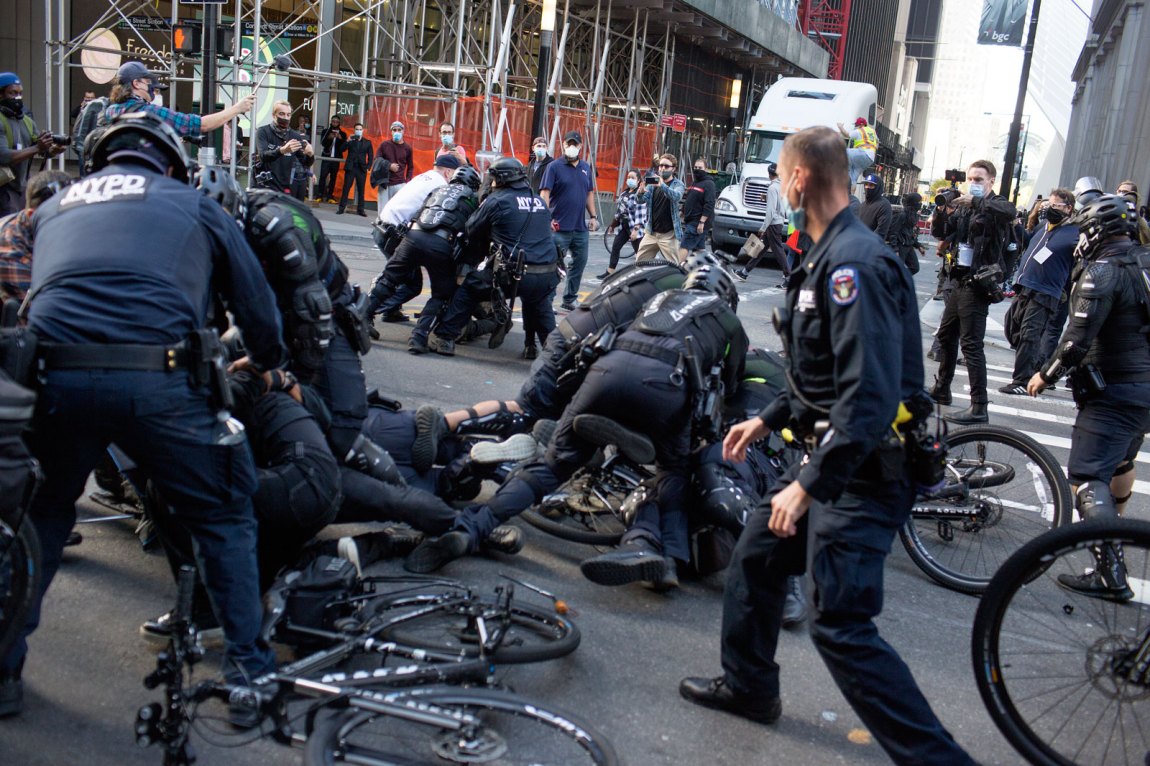As 2020’s chaotic presidential election was called last weekend, New York City erupted in a cacophony of joy at Donald Trump’s defeat. America’s largest city endured a grim nadir earlier in the year, with the Covid-19 pandemic killing tens of thousands of New Yorkers and crippling its tourism- and service industry–dependent economy. That damage came on top of stark inequality: already, at the start of 2020, one in five New Yorkers lived at or below the poverty line, and the income gap between richest and poorest is the widest of any city in the nation.
The year’s second major upheaval, the nationwide protests against police violence triggered by George Floyd’s murder by a Minneapolis police officer, laid bare another fault line of the metropolis: the rift between city residents and the 34,000-strong New York City Police Department. Opinion polling indicates that policing played a big part in 90 percent of voters’ decisions this November, and with more than 76 percent of New Yorkers casting their ballots for Joe Biden, it was clear where the vast majority’s sympathies on issues of policing and racial justice lay.
What was, for many residents, already a fraught, distrustful relationship with America’s largest police department was only exacerbated by the NYPD’s eye-popping brutality in response to the protests sparked by Floyd’s death, from May 28 onward. After Mayor Bill de Blasio imposed a citywide 8 PM curfew in New York City on June 1, after a brief period of four (May 29–June 1) nights of lawlessness and looting, that deadline itself became a flashpoint with otherwise peaceful protesters: when police moved to disperse a crowd of demonstrators in the Bronx’s Mott Haven neighborhood on June 4, more than 250 people—including medical workers and legal observers—were trapped in a maneuver known as “kettling” and arrested for violating the curfew. Human Rights Watch published an exhaustive report documenting brutal and unlawful tactics used by police in that incident.
Occasionally, demonstrations have involved damage to property: during one nighttime march through the Upper West Side on July 29, a police car was torched near Police Commissioner Dermot Shea’s residence (a Queens man was later arrested and charged with federal offenses for the act). Less frequent—though highly visible in media coverage—have been attacks on police officers, particularly the lieutenant who had a brick thrown at him in the Village in late May. Overwhelmingly, though, the protests throughout the summer were peaceful and orderly. Yet, on many occasions, people’s social media feeds have been filled with video clips and images of SUV patrol cars driving into crowds, unwarranted mass arrests, aggressive baton charges, and the use of police bicycles as battering rams. The press are not exempt from this violence either—a number of reporters have been arrested and detained while covering street demonstrations, regardless of whether they carry identification.





